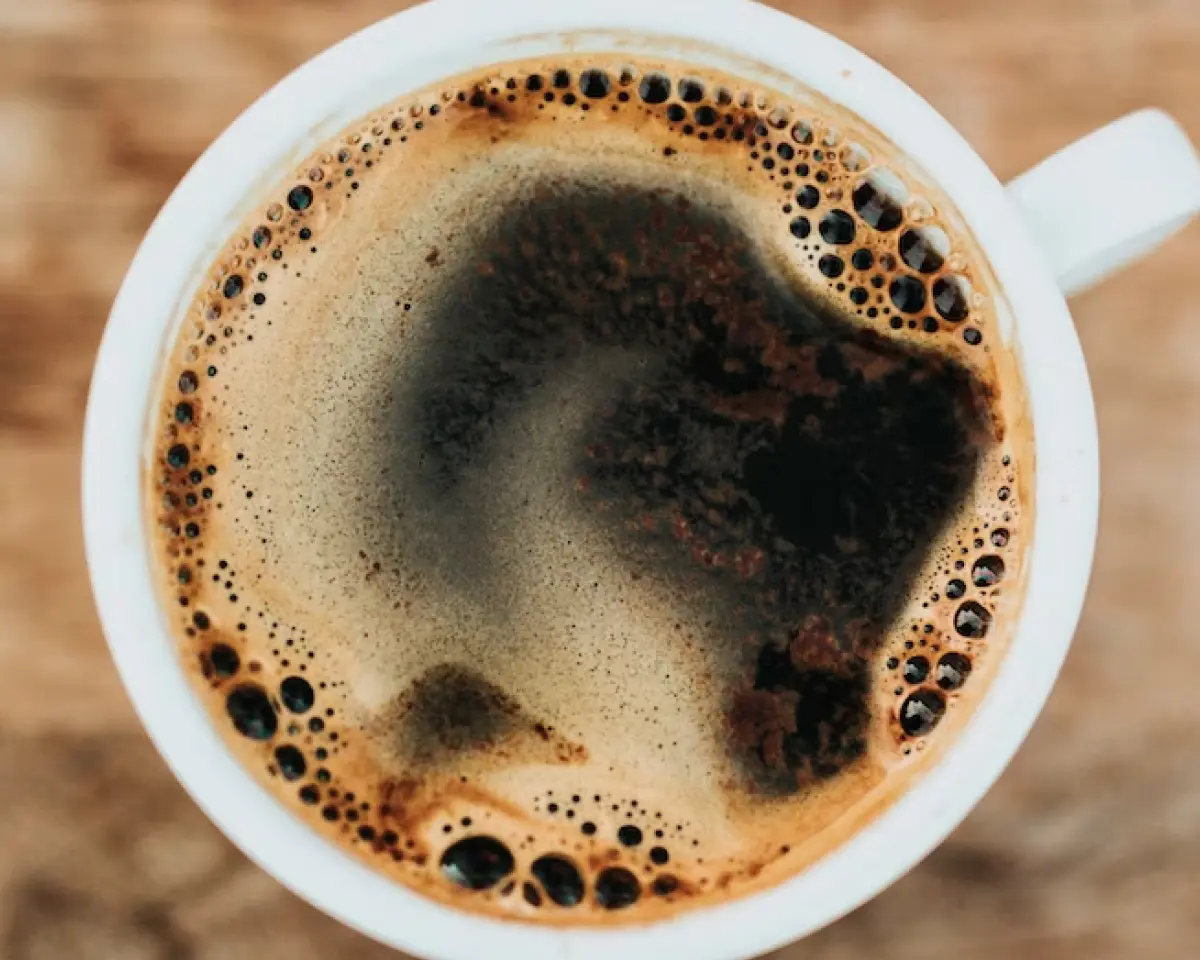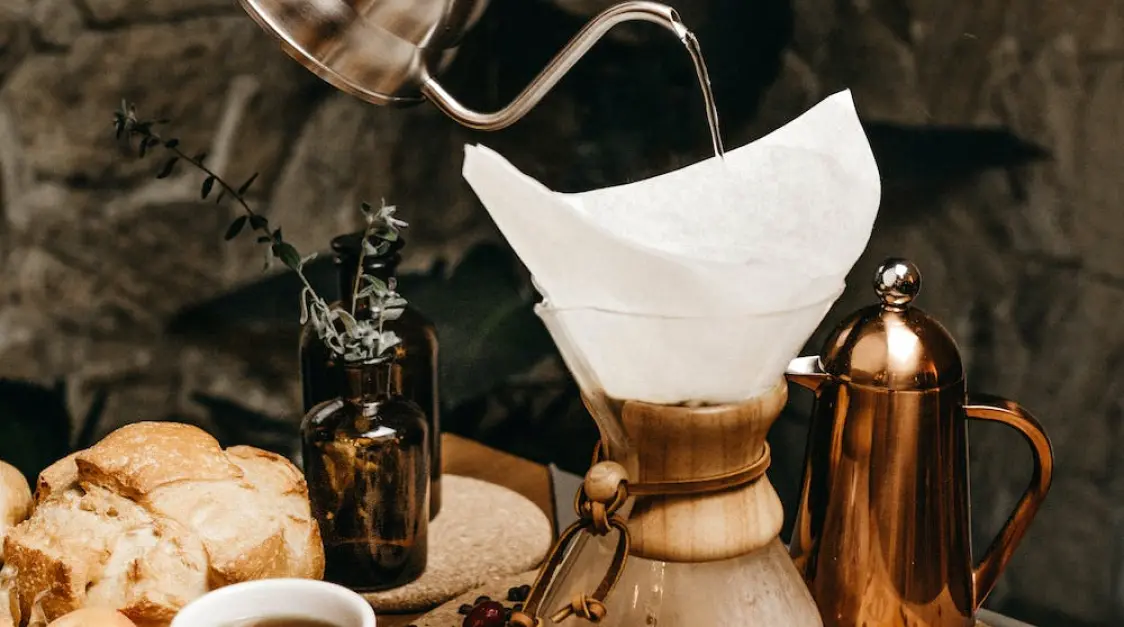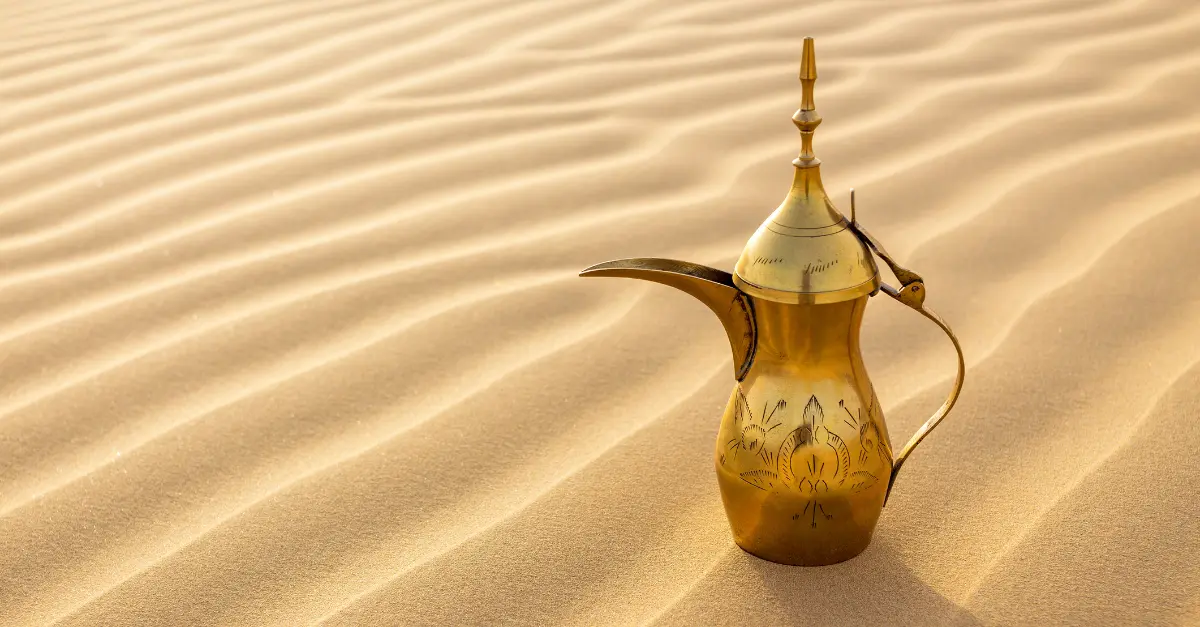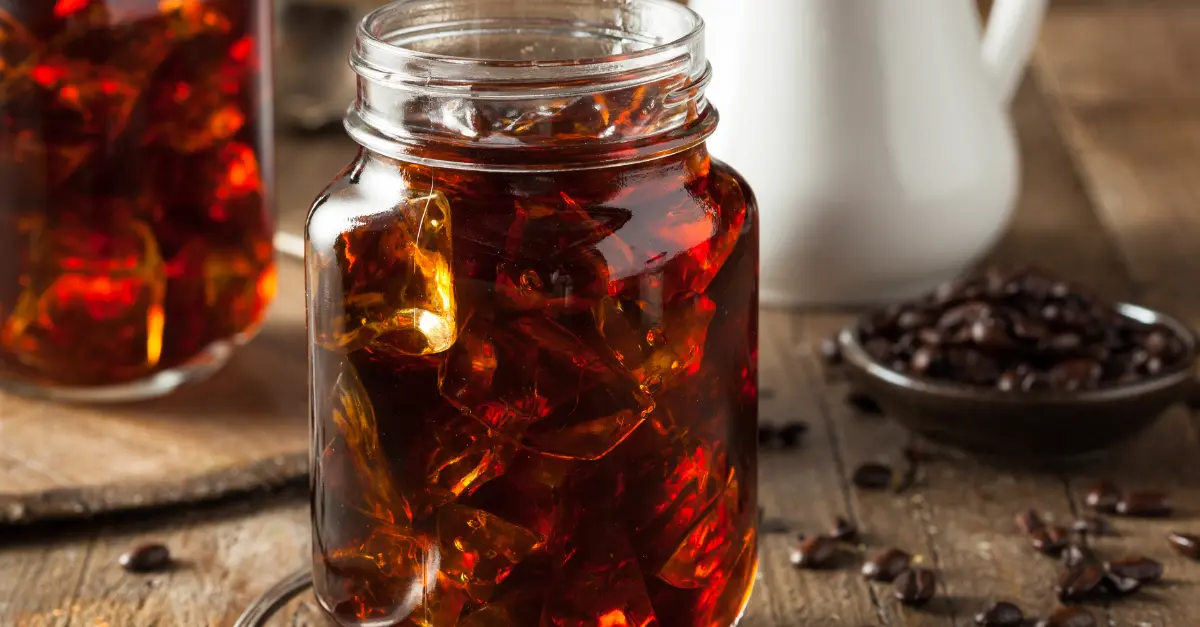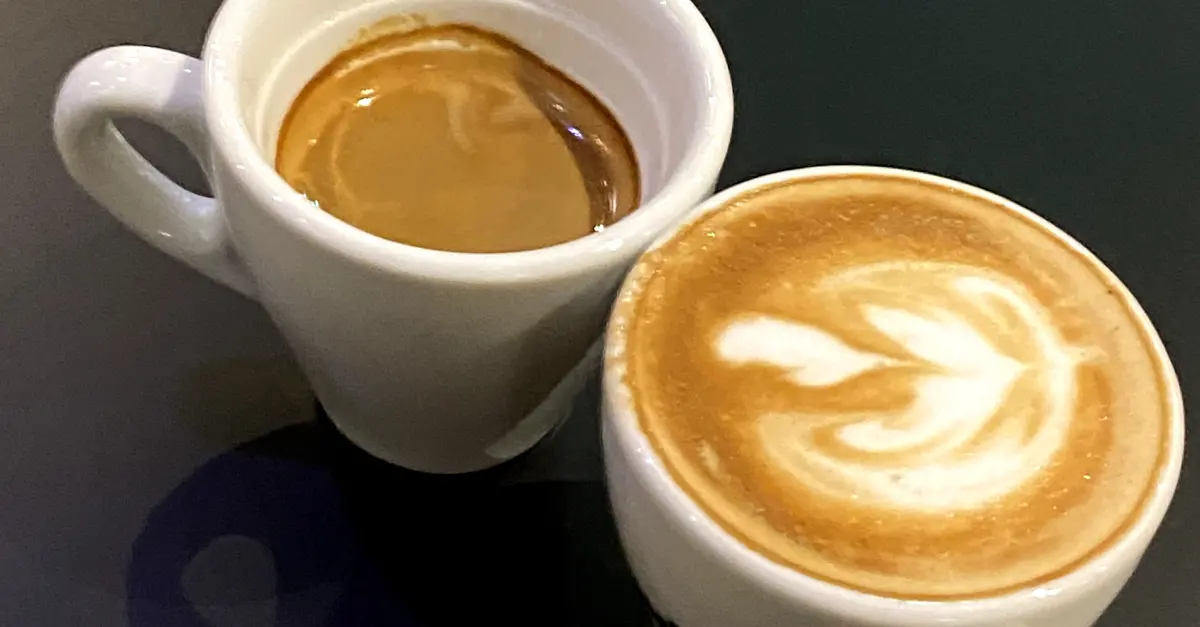You may be wondering why it is essential to know the coffee-to-water ratio when making your morning cup. Well here’s why! An incorrect coffee-to-water ratio (in any coffee brewing method) significantly affects the strength, consistency and taste of the coffee. Therefore, one must know the correct coffee-to-water ratio in all brewing methods to avoid an unwanted and imbalanced brew.
Here comes the tricky part! Contrary to popular belief, when it comes to determining the coffee-to-water ratio, it is not a one size fits all situation. Each brewing method has its coffee-to-water ratio.
If you want to learn about the various coffee-to-water ratios for top coffee brewing methods, read on!
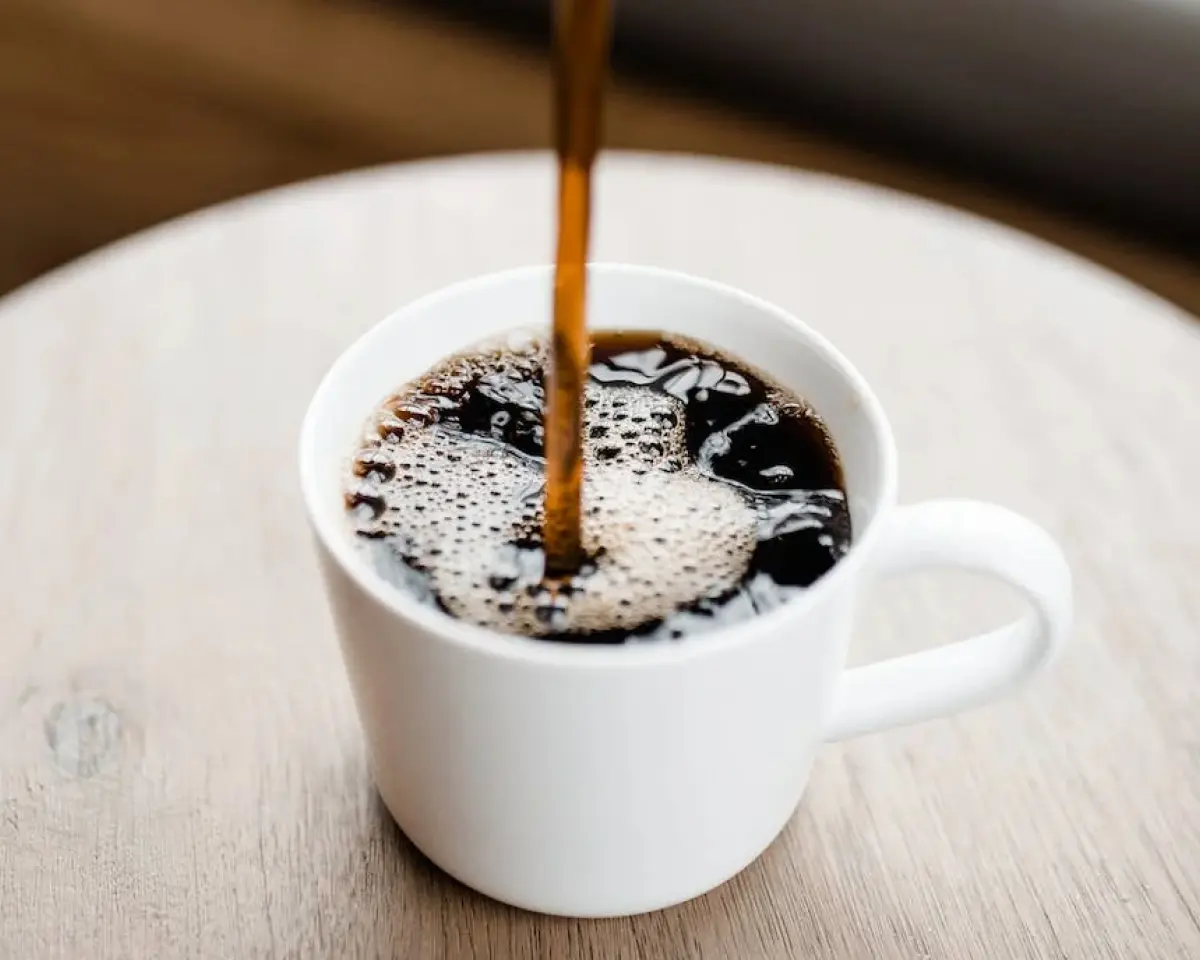
How Much Coffee-to-Water Ratio for French Press?
The average coffee-to-water ratio for French Press is 1:15, which means 1 gram of coffee to 15 milliliters of water.
For a more robust cup, an excellent coffee-to-water ratio would be 1:12, which increases the concentration of coffee. On the other hand, a coffee-to-water ratio of 1:17 would be ideal for a weaker cup of French Press coffee. The best tool to use is a scale to measure these ratios accurately. So if you have an ordinary kitchen scale, do not hesitate to measure out your coffee and water for that perfect cup!
However, if you do not have a scale or the patience to use one, you could implement another useful method to measure your french press coffee-to-water ratio. Tablespoon measurements work well when determining the perfect coffee-to-water ratio. Considering that most French presses are 32 ounces (of water), 12 tablespoons of coffee would be a good amount to make regular-strength coffee. If we had to calculate these ratios per cup, with each cup measuring about 16 ounces of water, that would require 6 tablespoons of coffee to make a delicious cup of regular-strength French press coffee. For a more robust cup of coffee, 8 tablespoons would be ideal, and for a weaker cup of French press coffee, 5 tablespoons of coffee would suffice.
Regardless of the method you decide to use to measure your coffee-to-water ratio for your french press coffee, the most critical factor has a well-balanced ratio to enjoy the perfect cup of coffee!
Now that we know how much the coffee-to-water ratio is for the french press read on to learn about the coffee-to-water balance for the pour-over method!
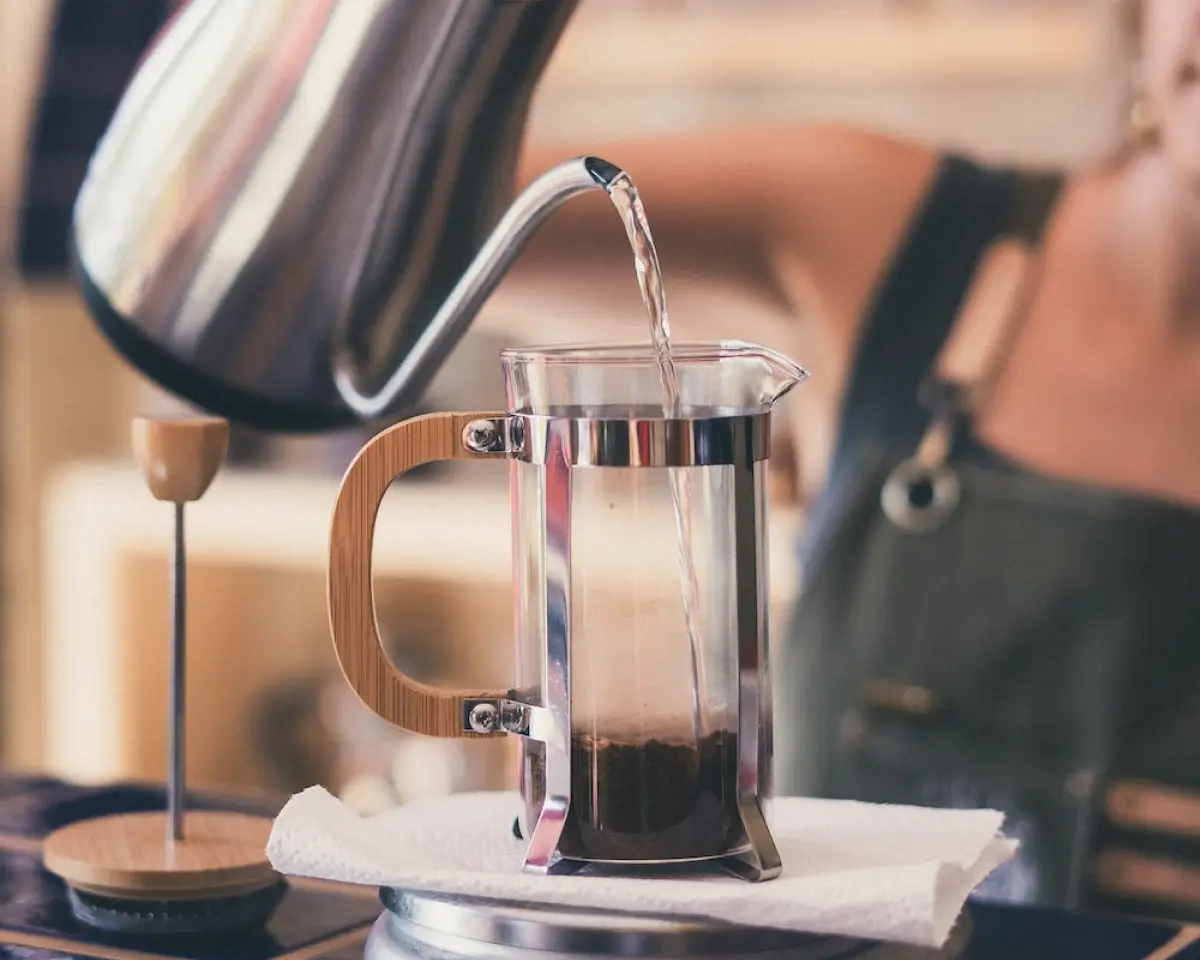
Pour Over: What is the Coffee-to-Water Ratio?
The Pour-Over coffee-to-water ratio is 1:17, 1 gram of coffee to every 17 milliliters of water.
Some coffee lovers prefer a water-to-coffee ratio of 16 milliliters to every 1 gram of coffee (1:16). However, the difference is minor.
We need to consider several factors when determining a suitable coffee-to-water ratio for Pour-Over. The Pour-Over brew uses an infusion method, meaning that the coffee and water are in contact for a shorter time than immersion methods. Temperature and grind size affect the taste and extraction of the Pour-Over process. So if you use the suggested coffee-to-water ratio and are not content with your cup of coffee, you should alter your temperature and grind size before changing the ratio.
Using a digital kitchen scale to measure your ratios accurately will provide a more consistent and balanced outcome because the Pour-Over method is done by hand. This is subject to human error when incorrect pouring techniques could lead to channeling. Trying to estimate your coffee-to-water ratio will alter the taste and strength of your coffee.
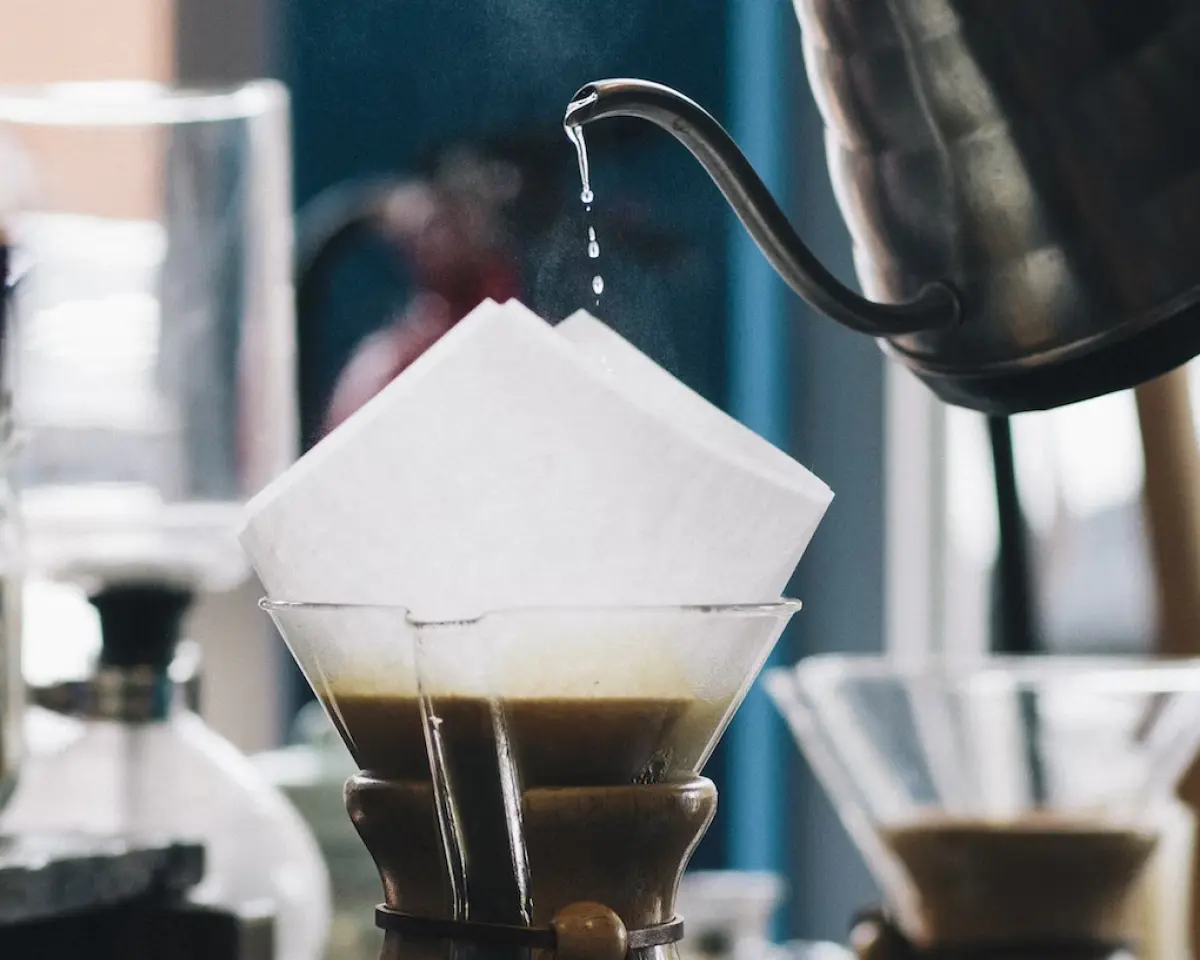
What Is The Coffee-to-Water Ratio For Espresso?
Espresso is a concentrate diluted in water or milk; because of this, the coffee-to-water ratio for Espresso is 1:2, which means 1 gram of coffee to every 2 milliliters of water.
All contributing factors being equal and balanced, this coffee-to-water ratio produces a great cup of coffee.
However, the common question is, ‘When I add more coffee, why does the flavor not enhance or change? This is because factors apart from ratios, such as grind size and brew time, also affect the coffee flavor. So it is important to note that having a well-balanced coffee-to-water ratio works best when your other factors are balanced.
When deciding on the most suitable gadget to measure your coffee-to-water ratio for Espresso, opting for the Kitchen scale will be a better option than using a scoop. A scale measures by weight, whereas a scoop measures by volume, increasing accuracy and consistency.
Now that we know all about Espresso coffee to water ratio read on to learn about perfect ratios for Cold Brew!
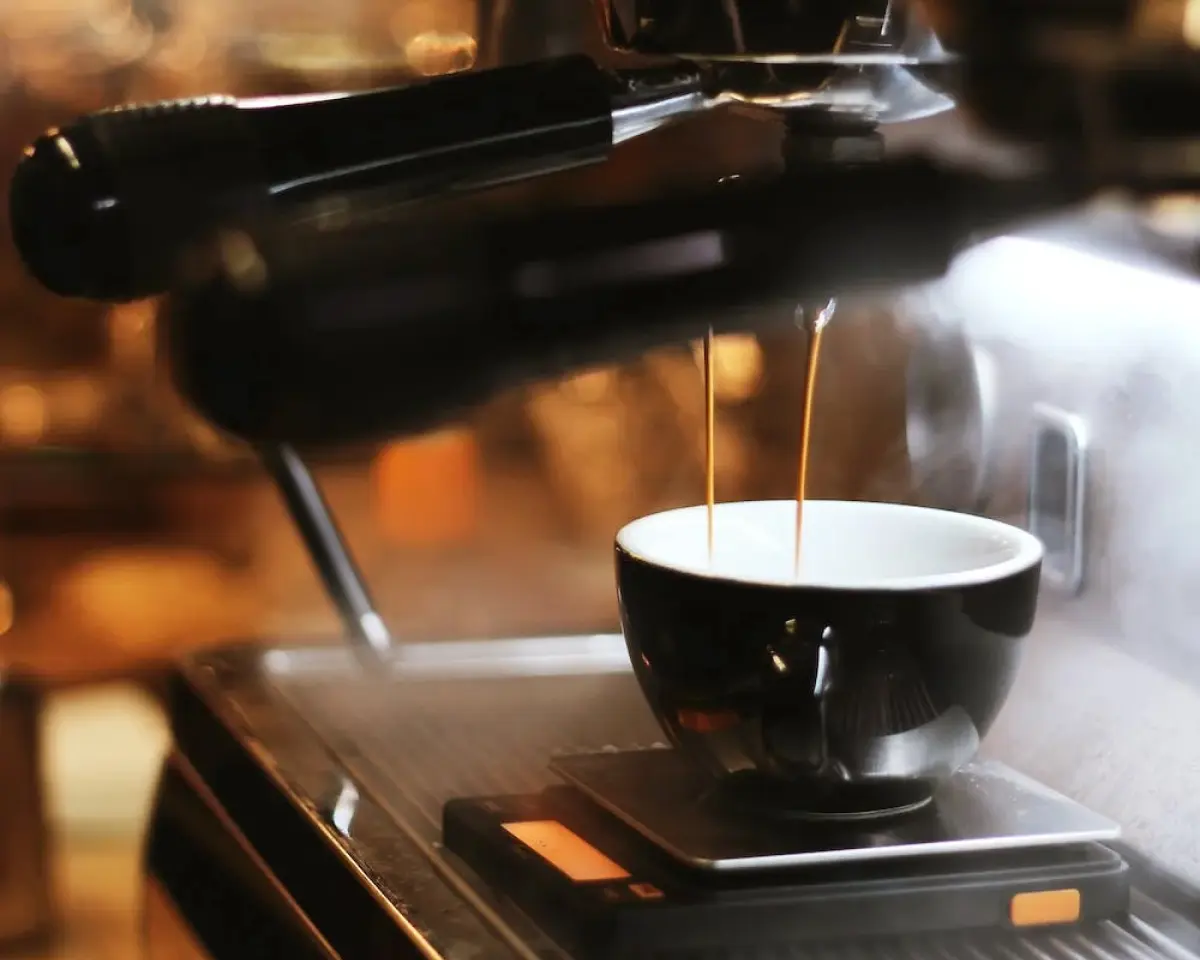
How Much Coffee-to-Water Ratio For Cold Brew?
An excellent coffee-to-water ratio for a delicious Cold Brew is 1:5, so 1 gram of coffee to 5 milliliters of water.
For a more potent cold brew, a coffee-to-water ratio of 1:4 would suffice; for a weaker cup of goodness, a ratio of 1:8 would be ideal.
Like most of the other brewing methods, using a digital scale for accuracy would be a good option; however, due to the nature of the Cold Brew method, tablespoon measurements are also a suitable alternative. In that case, using 2 tablespoons of coffee per 1 cup of water will be an excellent coffee-to-water ratio (Note that this method is already diluted).
When using the coffee-to-water ratio of 1:5, dilution is necessary as the cold brew at this stage is still heavily concentrated. For all coffee lovers that enjoy creamy coffee, dilute your Cold Brew concentrate with milk to give a creamy twist to the mix (you can thank me later!).
Let us move over to the coffee-to-water ratio for Aeropress!
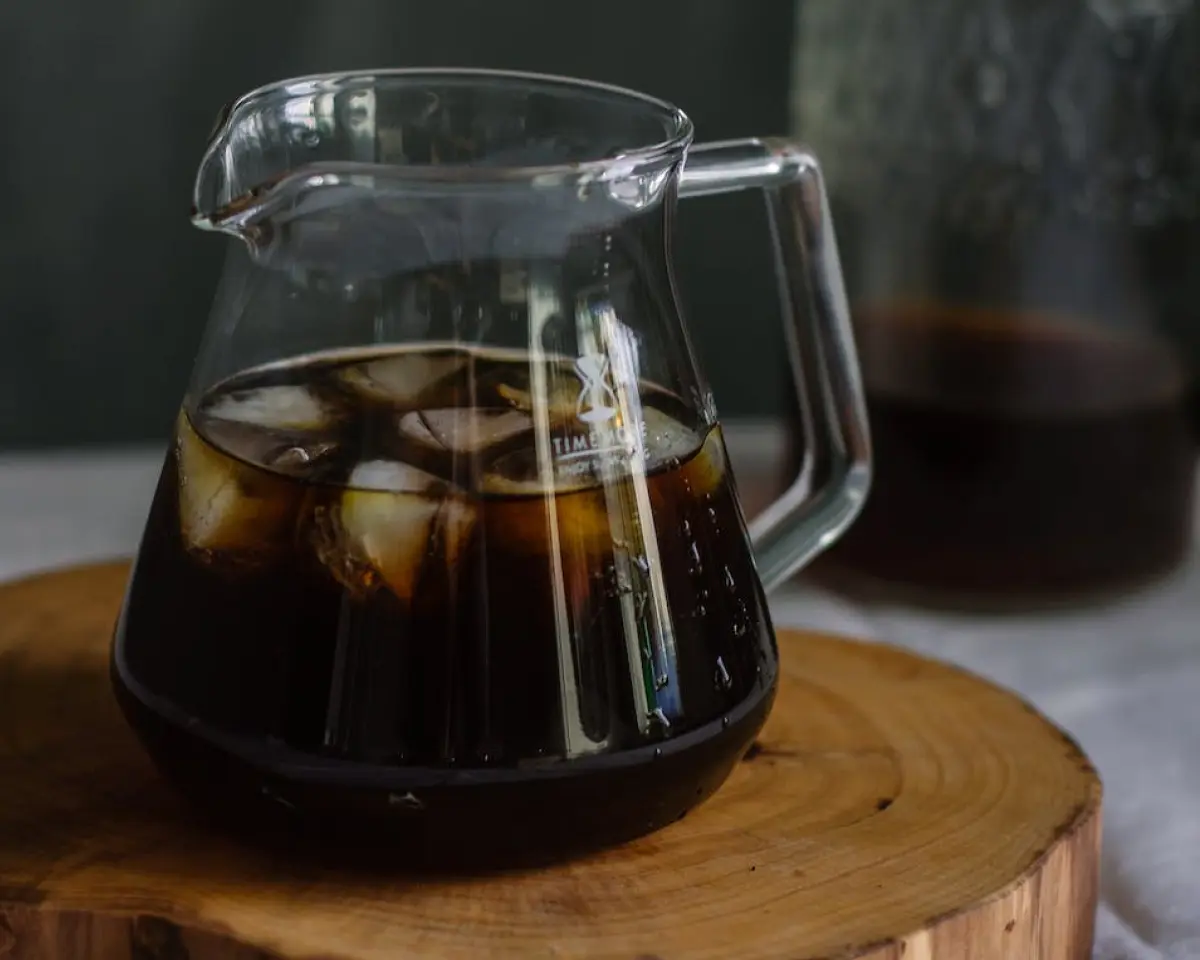
Aeropress: What Is The Coffee-to-Water Ratio?
The average coffee-to-water ratio for Aeropress is 1:15. A more robust cup of coffee would use a coffee-to-water ratio of 1:10, and a weaker cup of Aeropress would use a ratio of 1:18.
Aeropress is an efficient way to make that much-needed coffee to kick-start your day. The trick to making a well-balanced cup of Aeropress coffee is getting the coffee-to-water ratio spot on.
The Aeropress brewing method relies mainly on brew time, grind size and temperature. So if your Aeropress coffee differs from your desired taste, consider taking note of these other factors before altering your coffee-to-water ratio.
Aeropress Coffee brewing is quite a precise and accurate measurement, so using a scale instead of a scoop is bound to give you a more balanced cup of coffee because the digital scale is more accurate than the scoop.
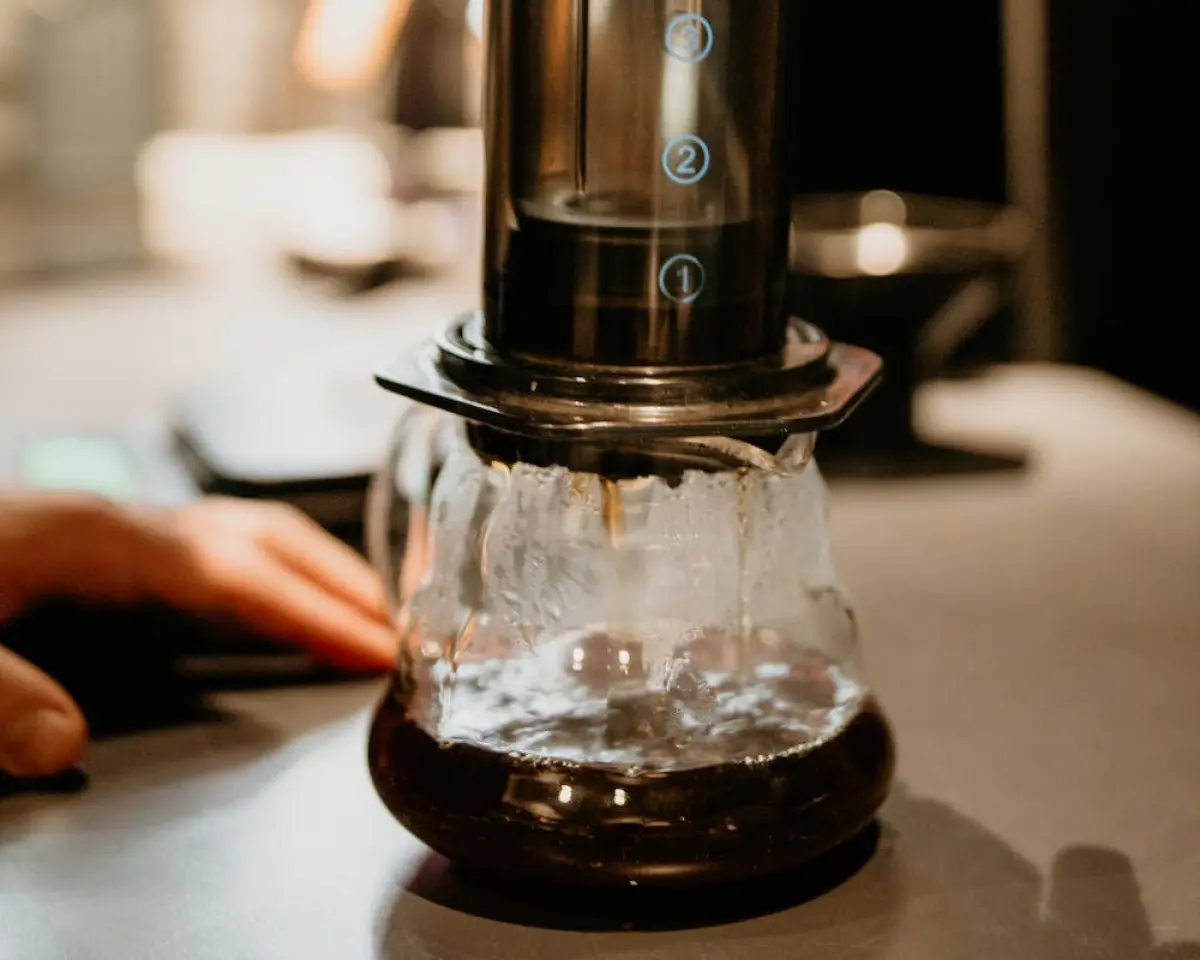
What Is The Auto-drip Brewer Coffee-to-Water Ratio?
When establishing a suitable coffee-to-water ratio for the perfect cup of Auto-drip Brew coffee a general ratio to work with is 1:16, which is 1 gram of coffee to 16 milliliters of water.
A proportion of 1:18 will give you a weaker cup of coffee, and a coffee-to-water ratio for a stronger cup of coffee would be 1:15.
A scale is the best option for accurate measurements; however, tablespoon measurements will work fine if you do not own one. Working with 2 tablespoons of ground coffee for every 6 milliliters of water is a good coffee-to-water ratio for your auto-drip coffee. A top tip would be to weigh the water before you pour it into the brewing reservoir, and after the coffee has been brewed, make sure you don’t allow it to sit as this takes away from the flavor and acidity.
If your coffee to water ratio is not quite to taste, consider checking your water temperature before changing your ratio. Most auto-drip brewing machines heat water up to 180 degrees Fahrenheit, which is not a high enough temperature to extract all the flavors from your coffee. So running a water cycle through your auto-drip and using that water to brew your coffee will increase the water temperature to about 200 degrees Fahrenheit - the perfect temperature to make a great cup of Auto-drip coffee.
Next, let’s look at the coffee-to-water ratio for Chemex brewing.
How Much Coffee-to-Water Ratio For Chemex?
A good coffee-to-water ratio for Chemex brewing is 1:15, that is, 1 gram of coffee to every 15 milliliters of water.
Using a kitchen scale is a suitable option. However, a tablespoon measurement will work just as well. When using a tablespoon to measure chemex coffee-to-water ratio, 3 tablespoons for every 1 cup of water is a good measurement for a lovely, well-balanced cup of coffee.
Regarding balance, your coffee-to-water ratio may be incorrect if your water temperature is too high or too low. Boiling water tends to scorch the coffee, while the other extreme tends to under-extract the flavors. Settling for an average of 200 degrees Fahrenheit and a well-calculated coffee-to-water ratio will give you the perfect cup of Chemex coffee.
Moka Pot: What is the Coffee-to-Water Ratio?
When using a Moka Pot, the ideal coffee-to-water ratio is 1:12, 1 gram of coffee to every 12 milliliters of water.
This will give you an espresso-like concentrate. For a cup of coffee highlighted by its characteristics and flavors, using a coffee-to-water ratio of 1:15 is most suitable. A digital kitchen scale ensures precision and consistency!
Be sure to use freshly roasted coffee beans, typically roasted within the last week. This will ensure a well-balanced coffee-to-water ratio, flavor and taste. When making a regular cup of coffee, dilute the coffee concentrate using between 80 to 100 milliliters of water. On the other hand, for a specialty cup of coffee use about 50 milliliters of water for dilution. To avoid affecting the coffee-to-water ratio, use a medium-fine grind (size of sand grains) as an extremely fine grind will seep into the coffee and alter the taste.
Siphon: What Is The Coffee-to-Water Ratio?
For a lovely fresh cup of Siphon coffee, the ideal coffee-to-water ratio is 1:15, which means 1 gram of coffee to every 15 milliliters of water.
The Siphon brewing method, like the Moka Pot is a specialty coffee brew method. This means using freshly roasted coffee beans (no more than two weeks old) when brewing is vital. The coffee-to-water ratios can be measured using a kitchen scale to maintain accuracy and consistency.
Similar to the Moka Pot method, it is essential to use medium coffee grinds, as fine coffee grinds could slip into the coffee, significantly altering the coffee taste. An important tip to note is that coffee has a large water composition; hence, the water you use will affect the overall taste regardless of your coffee-to-water ratio. Therefore, using filtered water is your best option.
Coffee-to-Water Ratio Calculations
Now that we have explored the various brewing methods and their coffee-to-water ratios, we need to establish simple and easy calculations to determine how much coffee and water to use.
We may not all be passionate about calculations, but these three calculations are easy to understand!
First of all, we need to know: 1 gram is equal to 1 milliliter.
First Calculation: Coffee Mass
Suppose we use a coffee-to-water ratio of 1:10, and would like to make a 350-gram cup of coffee. This is how we find the amount of coffee we need:
Divide the water mass by the water ratio, which gives you the coffee mass.
Water Mass ➗ Water Ratio = Coffee Mass
350 ➗ 10 = 35 grams of coffee
Therefore, you would need 35 grams of coffee to make a 350-gram cup of coffee at a ratio of 1:10.
Second Calculation: Water Mass
We know the amount of coffee we need (15g) and the ratio (1:15), but we must figure out the required water mass. This is how we find the amount of water we need:
Multiply the coffee bean mass by the water ratio, which will give you the required water mass.
Coffee bean mass x Water Ratio = Water Mass.
15 x 15 = 225 milliliters of water
Third Calculation: Coffee-to-Water Ratio
Suppose we know the coffee mass (35 grams) and water mass (350 grams), but we must understand the coffee-to-ratio. This is how we find the coffee-to-water ratio used:
Divide the water mass by the coffee mass, giving the coffee-to-water ratio.
Water Mass ➗ Coffee Mass = Ratio
350 ➗ 35 = 10:1
Answer
35: 350 = 1:10 (Coffee to Water ratio)
